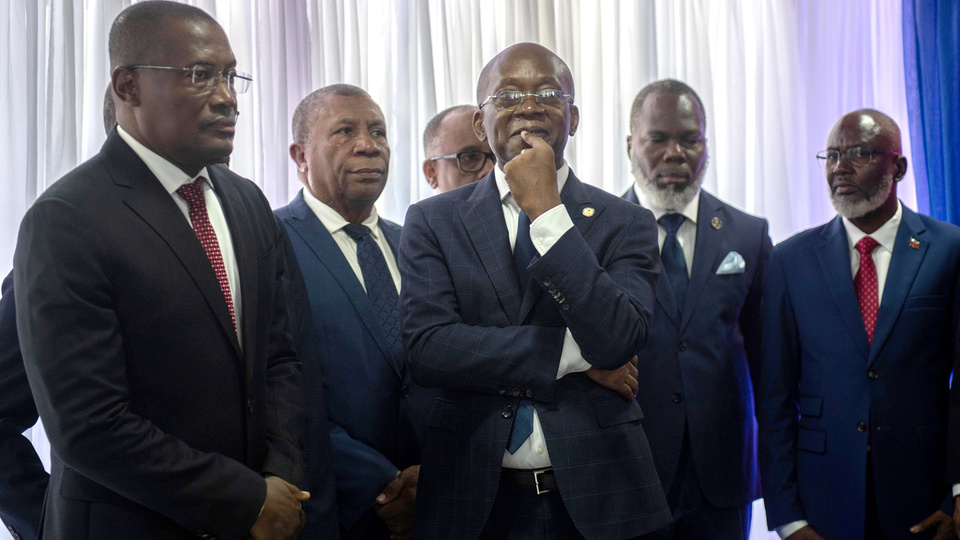
Chris Caputo stood on the tarmac of Vermont’s Burlington International Airport in early October and looked up at the clouds in the distance. He had flown military and commercial aircraft over a long career, racking up thousands of flight hours, but the trip he was about to take would be very different.
This is because the plane that Mr. Caputo will be flying is powered by batteries. For the next 16 days, he and his colleagues flew the plane, a CX300 made by Beta Technologies, his employer, on the East Coast. They would make nearly two dozen stops to rest and recharge, flying through the crowded airspace of Boston, New York, Washington and other cities.
When the flight ended in Florida, Pita handed the plane over to the Air Force, which would pilot it over the next few months. The flight offered a vision of what aviation could look like years from now, when the skies are filled with planes that do not emit the greenhouse gases that are dangerously warming the Earth.
“We are doing some really good work for our state, our country and our planet,” Mr. Caputo said. “It’s hard not to want to be a part of it.”
A flurry of activity
For most of aviation history, electric aircraft were little more than a fantasy. But technological advances, especially in batteries, and billions of dollars in investments, have helped make short-distance electric air travel possible — and its proponents hope it will be commercially viable.
Beta, which is privately held, has raised more than $800 million from investors such as Fidelity, Amazon’s Climate Pledge Fund and private equity firm TPG Capital. The company employs about 600 people, mostly in Vermont, and recently finished building a factory in Burlington where it plans to mass produce its planes, which have not yet been certified by the Federal Aviation Administration.
The first will be the CX300, a sleek, futuristic plane with a 50-foot wingspan, large curved windows and a tail propeller. Designed to carry about 1,250 pounds of cargo, this aircraft will be followed shortly by the A250, which shares about 80 percent of the CX300’s design and is equipped with lift rotors for takeoff and landing like a helicopter. The company says both planes, which Beta is marketing under the name “Alia,” will eventually carry passengers.
Beta is one of many companies working in the field of electric aviation. In California, Joby Air and Archer Air are developing battery-powered aircraft capable of vertical flight, which, they say, will transport a group of passengers over short distances. These companies have backers such as Toyota, Stellantis, United Airlines, Delta Airlines, and large investment companies. Well-known manufacturers such as Airbus, Boeing and Embraer are also working on electric aircraft.
The US government has mobilized to support this industry as well. The FAA aims to support large-scale operations of aircraft using new propulsion methods in one or more locations by 2028. The Air Force is awarding contracts and testing vehicles, including Beta’s CX300 and the aircraft that Jobe delivered to Edwards Air Force Base in 2018. California in September.
“Almost one with the plane.”
The Beta plane is not as large and powerful as the planes Mr. Caputo has flown for the Air Force, Air National Guard or Delta. But what it lacks in heft, it makes up for in charm, he said, noting that the plane is incredibly quiet and responsive, which makes it fun to fly.
“You’re almost a member of the plane,” Mr. Caputo said, later adding: “You can hear and feel the air passing through the flight control surfaces. We wear helmets now because it’s experimental and safety is paramount, but we can literally take the helmets off on the plane and talk to each other.
Mr. Caputo said the CX300 and other electric aircraft could open new opportunities, such as improving connectivity to rural areas that have little or no direct air service.
The Beta has flown up to 386 miles on a single charge, but the company said it expects its customers will generally use it for trips of 100 to 150 miles. The plane’s flight to Florida was authorized under limited authority granted by the Federal Aviation Administration
In addition to producing no emissions, electric aircraft are designed to be easier to operate and maintain than conventional helicopters and airplanes. But they are not expected to take to the skies in large numbers for years. At first, their flights will likely be short — from Manhattan to Kennedy International Airport, for example, or from Burlington to Syracuse, New York.
Modern batteries can support a limited range and weight. As a result, the aircraft being operated can generally only carry a small number of passengers, or an equivalent load of cargo.
It is expected early on that electric aircraft will compete mainly with helicopters, cars and trucks. In cities, large-scale flights would not be possible without expanded infrastructure such as landing sites, vertical take-offs, and public support. Experts said that the cost of producing such aircraft would also be high at first, which would limit their use to the wealthy and for vital services such as medical evacuations.
The challenge and promise of electric aviation today are in some ways similar to what automobiles were at the turn of the 20th century, said Kevin Michaels, managing director of AeroDynamic Advisory, an aviation consulting firm.
“You had several hundred manufacturers around the world, each with their own unique ways of making these machines, but you didn’t have the roads, you didn’t have traffic lights, you didn’t have insurance,” he said. But he added that the industry eventually found its way. “Things stabilized after 20 years, and eventually costs came down, and winners emerged. It changed the way things were done, the way people lived.”
Aim to gain trust
Kyle Clark, PETA’s founder, understands these concerns, which is why he says PETA has taken a more systematic approach.
“I get it, the industry has a trust problem,” he said. “It’s a very big change, very quickly, in an industry that has a very high level of safety.”
The company first plans to win FAA certification next year for an engine it developed, followed by approvals for its first and second aircraft in subsequent years. Mr Clark said the CX300 would use the runways to carry cargo, avoiding the need for new infrastructure.
The approach has been adopted by several customers, according to PETA, including shipping giant UPS and United Therapeutics, which plans to use the compounds to transport organs for transplantation. Bristow Group, another customer, plans to use the plane in much the same way as helicopters today, to transport cargo and people to offshore energy facilities, conduct search and rescue missions for governments, and for other purposes.
Bristow, which is working with eight companies to develop next-generation aircraft, expects the vehicles will create new opportunities because they are quieter than helicopters and are expected to be 60 to 70 percent cheaper to operate, according to David Stepanek, executive vice president at Bristow. Presto.
In addition to building planes, Beta is creating a network of chargers that can power its planes as well as cars, trucks, and other vehicles. More than a dozen have been established, including one at an Air Force site in Florida, making it the perfect location The first military electric aircraft charging station.
The company has also built a modular landing site for vertical flight-capable aircraft, which sits atop repurposed shipping containers, which contain energy storage and a small living space for pilots to rest between flights.
On the day the Beta plane left Burlington in October, Caputo flew it on two legs, arriving at sunset at Griffiss International Airport in the foothills of the Adirondack Mountains, near where he grew up. He ordered Italian food for the Beta team from a restaurant he frequented with his family, and his mother drove out to see the plane in person for the first time. The next morning, he flew the plane to Syracuse, New York, and handed it over to his colleagues who would fly it the rest of the way.
Much of the popular discussion about electric aircraft revolves around the idea that they will be effectively used as flying cars to transport people around major cities. However, in the near future, they will likely also be used to transport freight and passengers outside of dense urban areas, in places like New York State and Vermont.
“For me, it will have a really meaningful impact on how we transport organs, goods and services, and reconnect areas of rural America that I think are often forgotten,” he said.

“Web maven. Infuriatingly humble beer geek. Bacon fanatic. Typical creator. Music expert.”




More Stories
UAW strike on Daimler Truck averted at 11: NPR
The FTC says Amazon executives destroyed potential evidence using apps like Signal
Stubborn inflation may prompt the Fed to keep interest rates high for longer